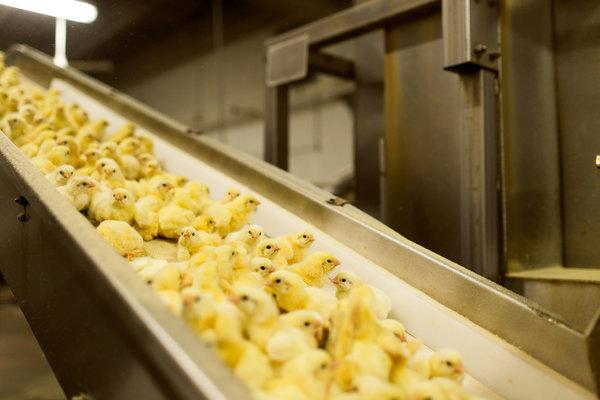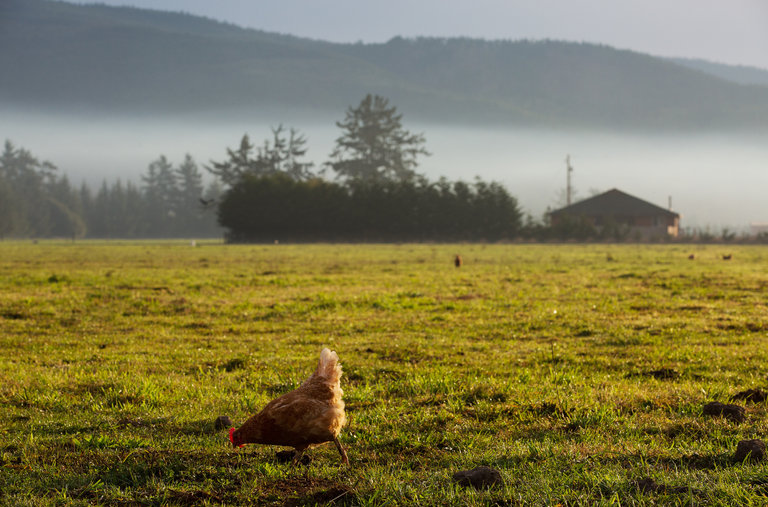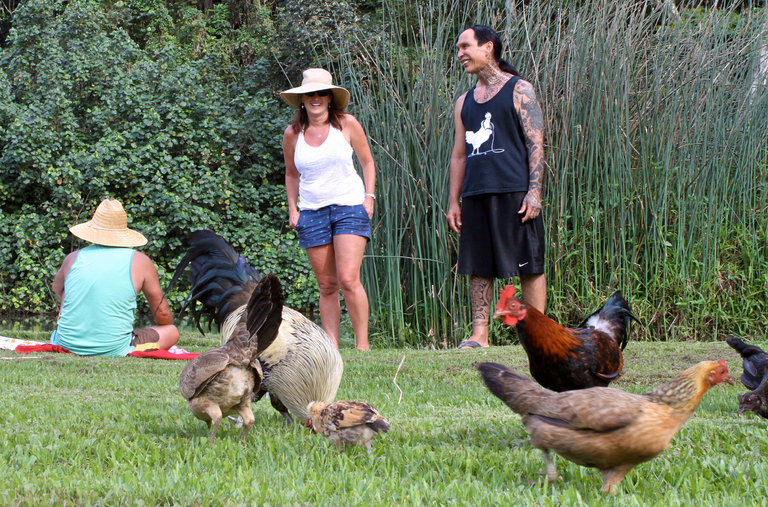It’s one thing to eat chicken every day. It’s something else to have that on your permanent record, as in the geological record, the remnants of our time that archaeologists or aliens of the future will sift through to determine who we were and how we shaped our world.
But a group of scientists argue in a new essay published Wednesday in the journal Royal Society Open Science that this is exactly how our time on Earth will be marked, by leftover chicken bones. We live in the Age of the Chicken.
There are about 23 billion chickens on Earth at any given time, at least ten times more than any other bird, forty times the number of sparrows. The second most numerous bird on the planet, at an estimated population of 1.5 billion, is a small creature called the red-billed quelea, sometimes known in its home of sub-Saharan Africa as a feathered locust.
The combined mass of those 23 billion chickens is greater than that of all the other birds on Earth. But, said Carys Bennett, an honorary fellow at the University of Leicester and one of the authors of the essay, it’s not only the mind-boggling numbers of chickens that will tell a tale of our times, but their shape, genes and chemistry.
“We have changed the actual biology of the chicken,” she said.
Chickens seem to have been domesticated about 8,000 years ago, and gradually bred to be larger and meatier than their jungle fowl ancestors. But it wasn’t until production of broilers ramped up in the 1950s and farming practices changed that the bird was transformed.
The modern broiler chicken, with an average life until slaughter of a scant five to nine weeks, by various estimates, has five times the mass of its ancestor. It has a genetic mutation that makes it eat insatiably so that it gains weight rapidly. It is subject to numerous bone ailments because it has been bred to grow so quickly. And because of its diet — heavy on grains and low on back yard seeds and bugs — its bones have a distinct chemical signature.

Chicks recently separated from the eggs they hatched from at a Perdue chicken farm in Candor, N.C.CreditJeremy M. Lange for The New York Times
The broiler is also completely dependent on and designed for an industrial system of meat production. It can only live supported by human technology. Eggs are artificially incubated and chicks grow in climate controlled sheds of up to 50,000 chickens, the scientists write.
The chickens are transported to slaughterhouses at no older than nine weeks (broilers at some farm animal sanctuaries live four years or more) “where most waste products (feathers, manure, blood etc.) are recycled via anaerobic digestion, incineration and rendering into edible byproducts, all technology dependent.” Chicken potpie anyone?
There is, of course a question about how well all the leftover chicken bones, from the 65 billion or so chickens consumed each year, will be preserved in the fossil record. Bird bones don’t fossilize well. But many chicken bones go to landfills, where they become mummified as much as fossilized. And there are so, so, so many bones.
The big issue, of course, is what all these chicken bones say about us.
The essay did not take a position on this question, leaving it up to the reader. “Some people would say this is an amazing technological innovation,” Dr. Bennett said.
Indeed, Tom Super, a spokesman for the National Chicken Council, an industry group, said that the production of chickens, in the U.S. at least, is a great success “in terms of efficiency, the welfare of the birds and responsibly producing more meat with fewer resources.”
On the other side, Lori Gruen, a philosophy professor at Wesleyan University and advocate for animal welfare, said that it was “hard to see this human caused transmogrification that purposely disables these birds from birth as something to be proud of.”
Of course, archaeologists of the future won’t just find chicken bones. There will be plastics, and concrete and other so-called technofossils. There will be radiation signatures in the rocks from nuclear tests. All of these will be markers of what some scientists call the Anthropocene epoch, the Age of Humans.
But the single most identifiable and significant biological remnant, these scientists argue, the lasting sign of how we changed the living world, will be the broiler chicken, in its numbers and strangeness.








